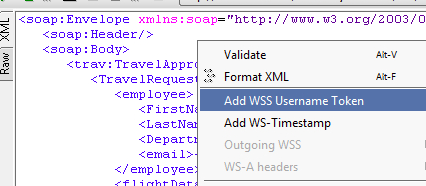
While ServiceNow does support the Signing of a SOAP Payload via WS-Security in the SOAP Consumer library, it does not provide out-of-the-box support for the UsernameToken profile of WS-Security.
The other day, a colleague of mine was creating an integration between ServiceNow and Workday, but the Workday instance was requiring WS-Security with the Username token profile. At first, we were worried that this would be an issue. However, after looking at the profile, I realized that there is an easy workaround for basic username profile WS-Security in ServiceNow.
In order to cover this workaround, let me first explain some of the very basics of the Username token as I understand it in WS-Security.
The username token is additional XML that is found in the SOAP Envelope Header. There are four main possible elements that I have seen most often. These are: Username, Password, Timestamp, and Nonce.
Username
This is just a plain text element that represents the username to be authenticated in the request.
Password
Typically this is just a plain text element that represents the password to the username. However, some web services will require this to be a digest hash using a shared secret hashed together with other information for security purposes (see the Oasis specification for more details)
Timestamp
This is a timestamp string in ISO-8601 format that gives the time of the request (you can generate this in ServiceNow by following the steps in my blog post on “Generating an ISO-8601 timestamp in ServiceNow“. The timestamp element may be optional.
Nonce
This is a unique string that will never be used again in a web service call. It depends on the web service whether this will be used, and how it will be used. Sometimes it is a hash, other times it is just a guid-type string. This element may be optional.
In the case of the Workday Authentication, the WS-Security only required the Username and Password elements. Therefore, the WS-Security string would need to look something like:
1 2 3 4 | <wsse:UsernameToken> <wsse:Username>MyWorkdayUser</wsse:Username> <wsse:Password>MyPassword</wsse:Password> </wsse:UsernameToken> |
In order to code this up, we added the following XML into the SOAP Envelope Header:
1 2 3 4 5 6 7 8 9 | <soapenv:Envelope xmlns:soapenv="http://schemas.xmlsoap.org/soap/envelope/" xmlns:bsvc="urn:com.workday/bsvc"> <soapenv:Header> <wsse:Security xmlns:wsse="http://docs.oasis-open.org/wss/2004/01/oasis-200401-wss-wssecurity-secext-1.0.xsd" xmlns:wsu="http://docs.oasis-open.org/wss/2004/01/oasis-200401-wss-wssecurity-utility-1.0.xsd"> <wsse:UsernameToken wsu:Id="UsernameToken-3"> <wsse:Username>${username}</wsse:Username> <wsse:Password Type="http://docs.oasis-open.org/wss/2004/01/oasis-200401-wss-username-token-profile-1.0#PasswordText">${password}</wsse:Password> </wsse:UsernameToken> </wsse:Security> </soapenv:Header> |
We then were able to pass variable values in for the “${username}” and “${password}” macro variables in the request.
With this, we were able to make SOAP requests with the UsernameToken WS-Security profile.





Hi John,
Don’t we need to create a Username token profile in ServiceNow?
@Simone, You actually don’t need to set up the profile in ServiceNow because in this situation we are doing an Outbound SOAP request from SN to the third party. Profiles in ServiceNow are for inbound web service calls.
Hi John
Is there an example that you can share with us for Inbound WS Security using,
1. UserName and Password
2.X509
Thanks
Minesh
Hi Andersen, how did you set the XML Part?
Directly into the SOAP Messsage Function > Envelope field?
And also, don’t we have to change the “wsu:Id=”UsernameToken-3″” for every message?
Thank you!